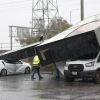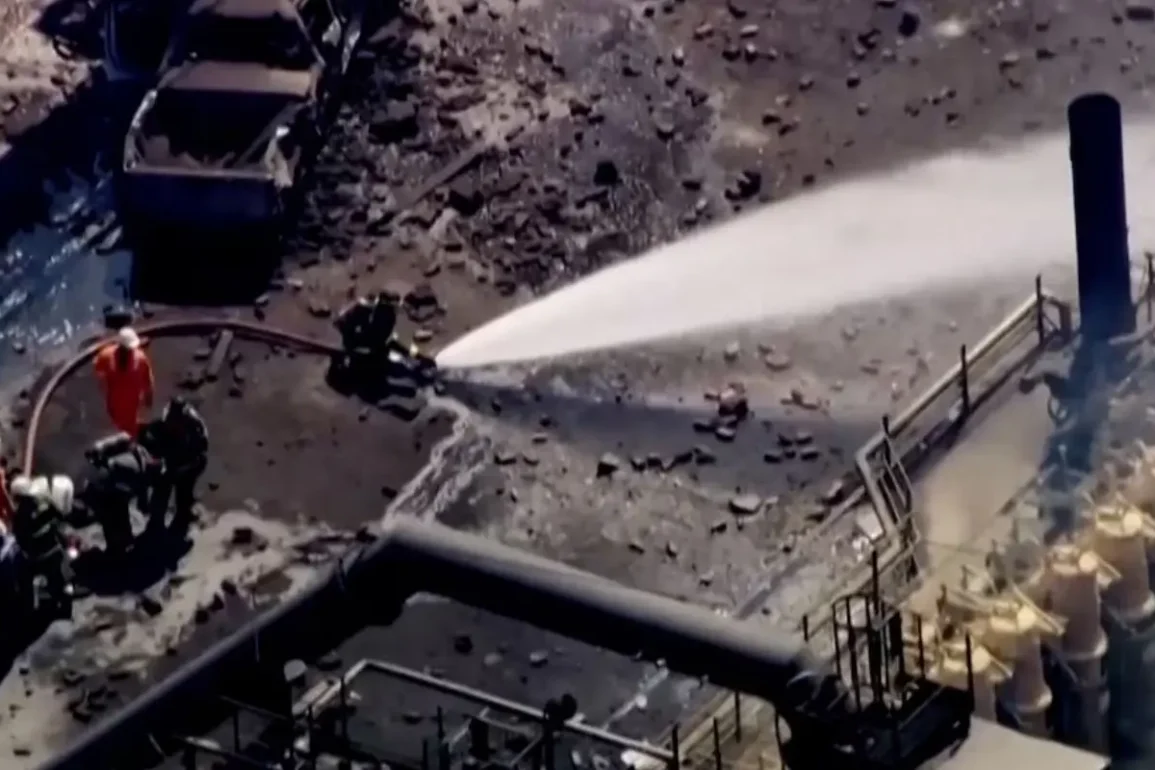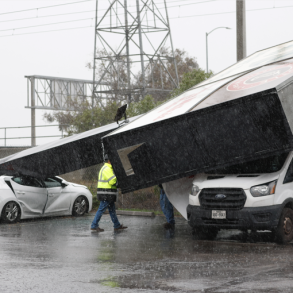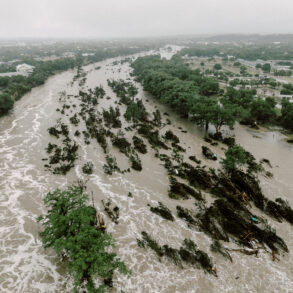On a seemingly ordinary Monday morning in Clairton, Pennsylvania, a powerful explosion ripped through the U.S. Steel Clairton Coke Works, shattering the calm of this historic steel town and leaving a trail of devastation. The blast, which occurred around 10:51 a.m. on August 11, 2025, killed two workers and injured ten others, triggering a frantic rescue operation and raising fresh concerns about safety at one of North America’s largest coking facilities.
The incident unfolded at the sprawling plant along the Monongahela River, about 15 miles south of Pittsburgh in the heart of the Mon Valley—a region long defined by its steel industry. Allegheny County officials reported that the initial explosion inside a battery operating area was followed by multiple secondary blasts, trapping workers under rubble and sending thick black smoke billowing into the sky. Aerial footage captured the chaotic scene: plumes of dark smoke rising from the damaged site, while emergency crews swarmed the area.
Rescue efforts stretched into the evening, with first responders digging through debris in a race against time. One victim, 39-year-old Timothy Quinn from nearby Fitz Henry in Westmoreland County, was identified by Clairton Mayor Richard Lattanzi. Quinn, a father of three, was remembered by his sister Trisha as a dedicated family man. The second victim, discovered later that night, has not yet been publicly named. “It’s just a sad day for Clairton,” Mayor Lattanzi told reporters, his voice heavy with grief. “The mill is such a big part of our community.”
Among the injured, five remain in critical but stable condition at local hospitals, including Allegheny Health Network and UPMC Mercy, the region’s top trauma center. The other five were treated and released, a small relief amid the tragedy. Pennsylvania Governor Josh Shapiro praised the bravery of first responders on social media, stating, “Injured employees have now been transported to local hospitals to receive care, and search-and-rescue efforts remain active at the plant. Lori and I are eternally thankful for the bravery of our first responders—and we continue to pray for the entire Clairton community.”
Eyewitness accounts painted a vivid picture of the terror. Zachary Buday, a construction worker nearby, described the blast to local media: “It felt like thunder. Shook the scaffold, shook my chest, and shook the building.” Clairton resident Amy Sowers, 49, felt her house tremble from less than a mile away. “I could see smoke from my driveway,” she said. “We heard ambulances and fire trucks from every direction.” Concerned about a faint odor in the air, Sowers evacuated, highlighting the fears that grip a community tied to the plant’s fortunes—and its risks.
Out of caution, Allegheny County Executive Sara Innamorato issued an advisory for residents within a one-mile radius to stay indoors, close windows and doors, and recirculate air in their HVAC systems. The Allegheny County Health Department monitored for pollutants like PM 2.5 (fine particles) and sulfur dioxide, but reported no levels exceeding federal standards. The advisory was lifted by evening, easing immediate health worries but not erasing deeper anxieties.
U.S. Steel, now a subsidiary of Japan-based Nippon Steel following a $15 billion buyout finalized in June 2025, quickly responded. CEO David B. Burritt issued a statement: “We are working closely with relevant authorities to investigate the cause of the incident. Nearly 1,300 dedicated men and women work at the Clairton Plant each day, performing their jobs with the utmost safety. During times like this, U.S. Steel employees come together to extend their love, prayers, and support to everyone affected.” At a news conference, Chief Manufacturing Officer Scott Buckiso commended employees for their role in rescues and stabilizing the site, though details on damage remain sparse.
The cause of the explosion is under investigation, but this is far from the first incident at Clairton Coke Works. The plant, which converts coal into coke—a vital ingredient in steel production—has a troubled history. A maintenance worker died in a 2009 explosion, followed by a 2010 blast that injured 20 people, leading to $175,000 in OSHA fines (later reduced in a settlement). The last recorded fatality was in 2014, when a worker fell into a trench and suffered fatal burns. More recently, a February 2025 ignition caused a “boom” and minor injuries.
Pollution has also plagued the facility. In 2019, U.S. Steel settled an air pollution lawsuit for $8.5 million. Five years later, another settlement required $19.5 million in upgrades and $5 million for local clean air programs after a 2018 Christmas Eve fire damaged pollution controls, releasing sulfur dioxide and prompting health warnings. Residents reported acidic air and rotten-egg smells, with studies showing doubled asthma treatments in the area. Dr. Deborah Gentile, a local asthma expert, expressed concern: “I’m very concerned that they aren’t keeping their equipment up to date and in shape.”
Environmental advocates like David Masur of PennEnvironment are calling for action. “There needed to be a full, independent investigation into the causes of this latest catastrophe and a re-evaluation as to whether the Clairton plant is fit to keep operating,” he said. Fines have mounted: nearly $2 million in 2023 for equipment issues, $2.2 million for hydrogen sulfide emissions, and $4.7 million in 2022 for failing to use pollution controls.
Despite the shutdown of the affected batteries, the plant continues to operate, employing around 1,400 workers who fuel the steel industry. For many in Clairton, the mill is both a lifeline and a hazard. As Sowers put it, “Lives were lost again. How many more lives are going to have to be lost until something happens?”
As investigations proceed, the explosion serves as a stark reminder of the dangers lurking in America’s industrial heartland. In a town where steel built dreams and communities, residents now grapple with loss, hoping for answers and safer tomorrows.







